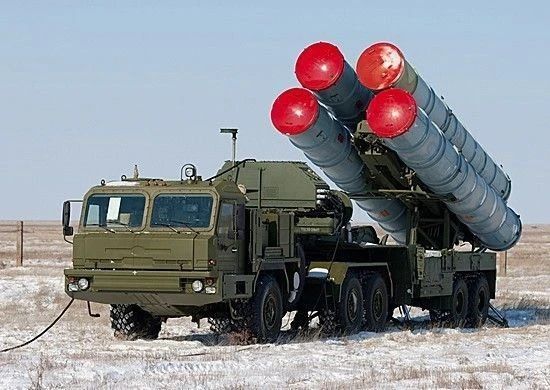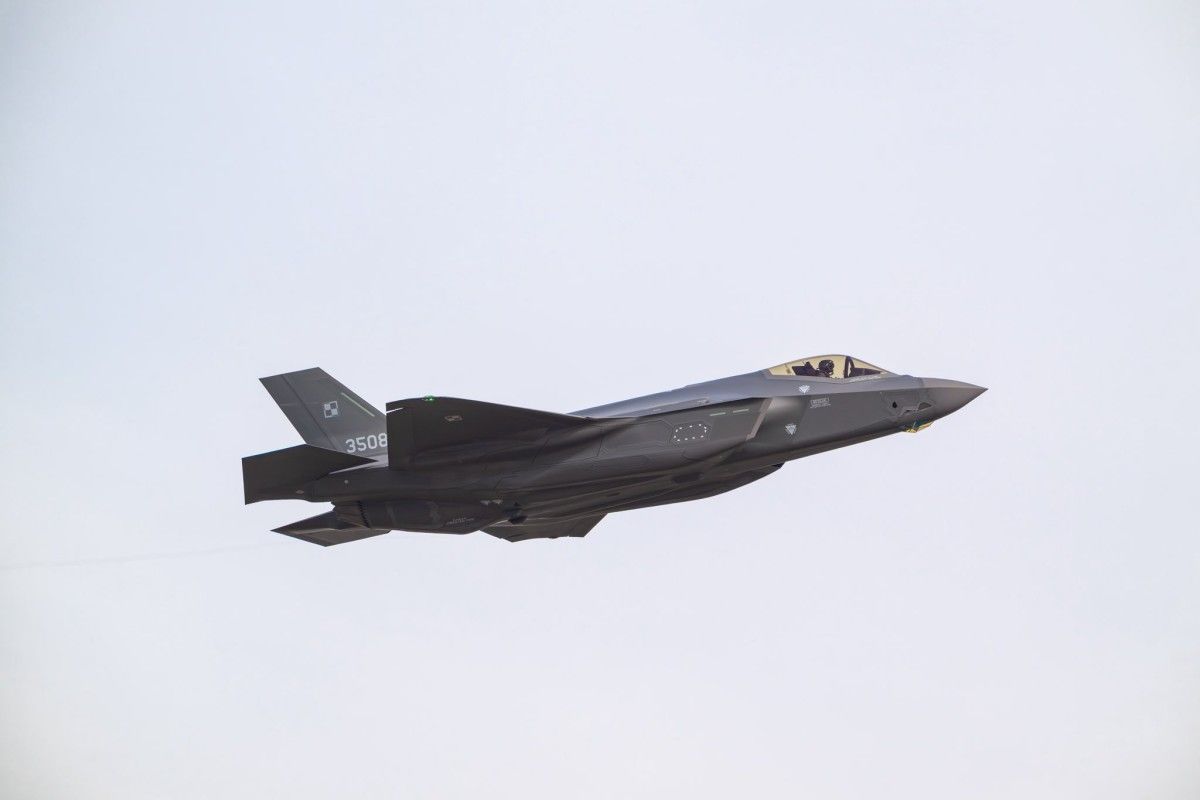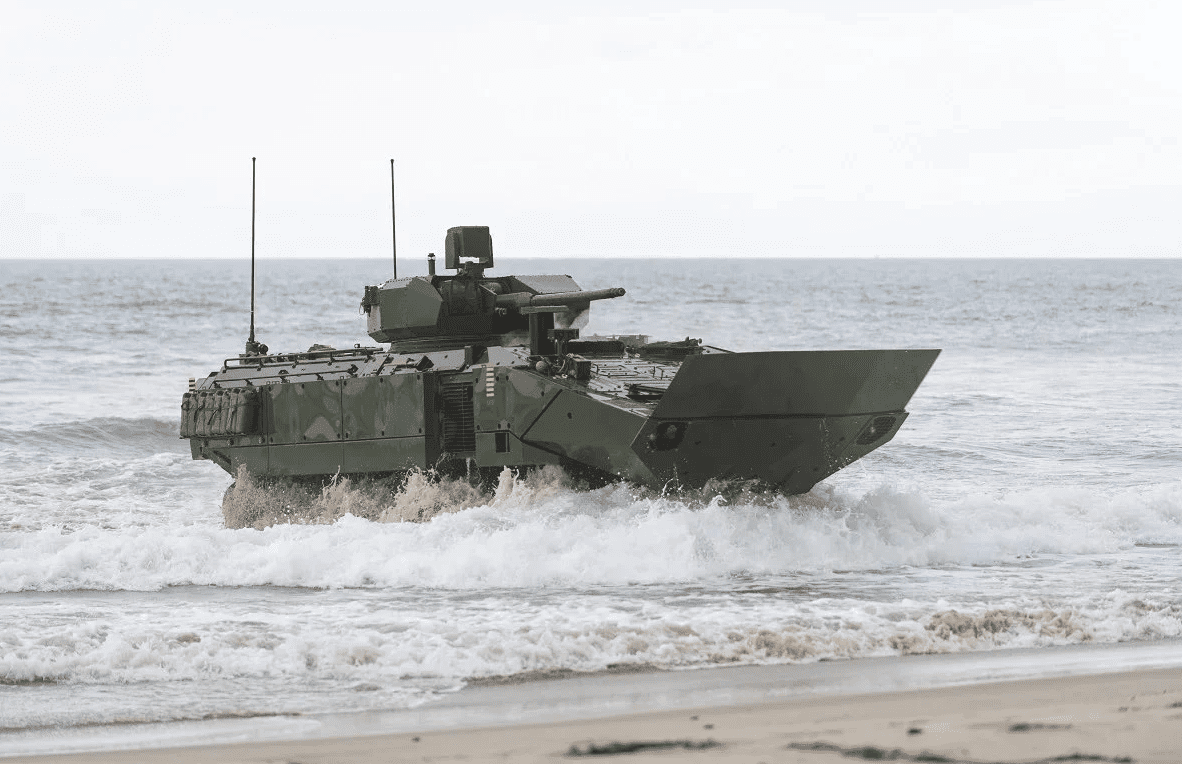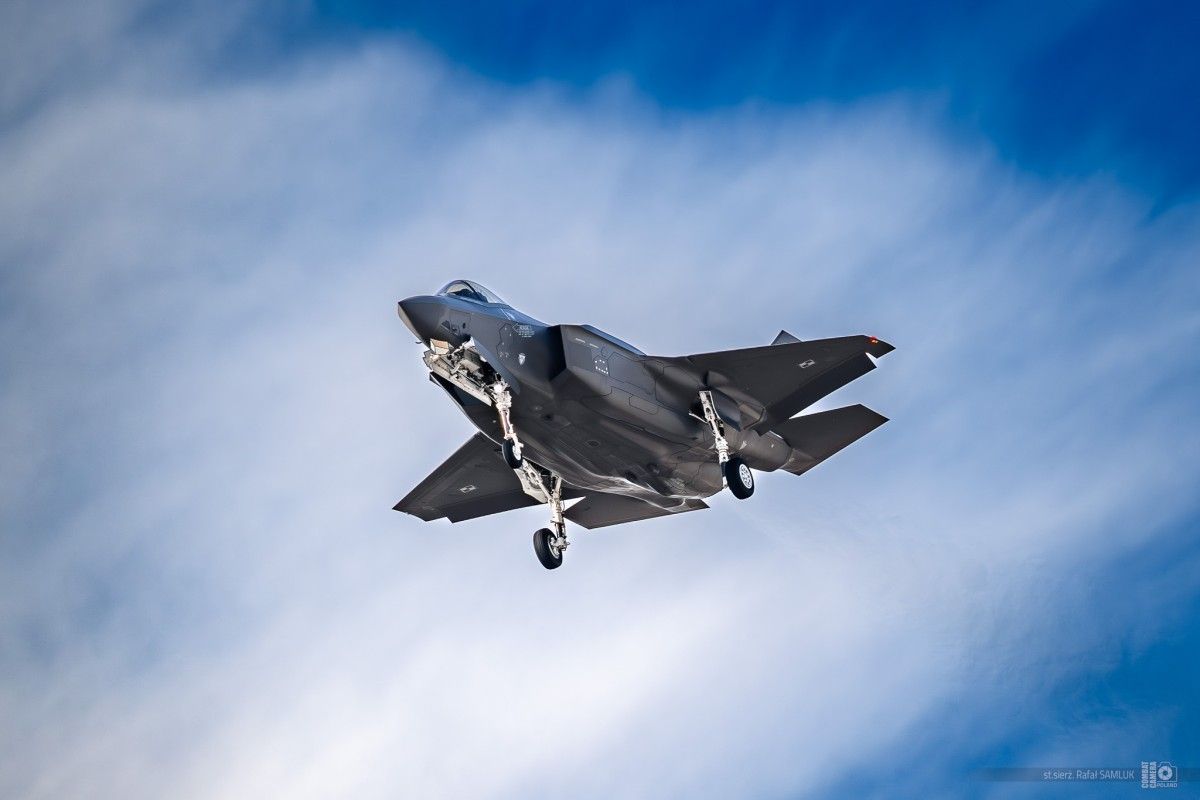
Вашингтон- Более 1100 самолетов-невидимок Lockheed Martin F-35 Lightning II были поставлены по всему миру, причем США эксплуатируют более 600 из них.
Самолеты занимают центральное место в американской оборонной стратегии и играют жизненно важную роль в безопасности таких союзников, как Япония (NRT) и Южная Корея (ICN), которые сталкиваются с давними спорами с Китаем.
По данным Управления подотчетности правительства США (GAO), передовой стелс-дизайн и слияние датчиков F-35 делают его незаменимым для Министерства обороны США и стран-партнеров. Однако самая амбициозная программа модернизации истребителя — Block 4 — сталкивается с серьезными задержками и растущими затратами, в основном из-за его зависимости от цепочек поставок, связанных с Китаем.
 F-35 Lightning II: фото Википедия
F-35 Lightning II: фото ВикипедияИстребитель F-35 Обновление Jet Challenge
С момента ввода в эксплуатацию ВВС США в 2015 году F-35 постоянно повышался за счет постепенной модернизации, известной как блоки.
Модернизация Block 4, запущенная в 2019 году, предназначена для расширения радиолокационного охвата самолета, усиления взаимодействия воздух-воздух и расширения возможностей точного удара. Он также объединяет передовые ракеты класса «воздух-воздух» и радарные системы следующего поколения.
Первоначально все 66 запланированных возможностей Block 4 ожидались к 2026 году. Этот срок был неоднократно отодвинут, сначала до 2029 года, а теперь, по крайней мере, до 2031 года.
В отчете GAO говорится, что даже к тому времени Lockheed Martin может предоставить только ограниченный набор обещанных функций. Затраты выросли более чем на 6 миллиардов долларов по сравнению с первоначальными прогнозами.
Основным фактором этих задержек является Technology Refresh 3 (TR-3), пакет обновлений аппаратного и программного обеспечения стоимостью 1,9 миллиарда долларов. Без TR-3 блок 4 не может функционировать. В 2023 году поставки F-35 в среднем задерживались на 61 день, но к 2024 году задержки растянулись до 238 дней.
 Фото: Needpix.com
Фото: Needpix.comКак Китай держит цепочку поставок
Наиболее актуальной проблемой является доминирование Китая над редкоземельными элементами и полупроводниками на основе галлия. Эти материалы необходимы для современных радаров, скрытых покрытий и высокопроизводительных магнитов внутри F-35.
Одна из важнейших модернизаций, радар AN/APG-85, зависит от технологии нитрида галлия (GaN). GaN обеспечивает более высокую плотность мощности и лучшую эффективность, чем арсенид галлия, обеспечивая больший диапазон обнаружения и устойчивость к помехам.
Тем не менее, Китай контролирует более 90 процентов мирового производства рафинированного галлия и 68 процентов доказанных запасов.
Пекин ввел жесткие экспортные ограничения на галлий и германий с 2023 года, еще более ужесточив их в конце 2024 года. Это удушение сырья напрямую угрожает срокам модернизации F-35 Block 4, сообщает Eurasian Times.
 Lockheed Martin F-35 Lightning II (фото)
Lockheed Martin F-35 Lightning II (фото)Редкие планеты внутри каждого F-35
Один F-35 содержит более 900 фунтов редкоземельных элементов, что делает его одним из самых ресурсоемких самолетов, когда-либо построенных. К ним относятся:
- Самарий-кобальтовые магниты Около 50 фунтов используются в каждом самолете для высокотепловых применений, таких как конусы носа ракеты. Китай производит весь мировой запас самария.
- Иттрий, диспрозий, тербий - Незаменим для основной авионики и стелс-покрытия.
- Галлий и германий Важное значение для радиолокационных и радиоэлектронных систем.
Центр стратегических и международных исследований (CSIS) отмечает, что REE также жизненно важны для подводных лодок, эсминцев и умных боеприпасов США, что делает зависимость от Китая более широкой проблемой национальной безопасности.
 Фото: Гонконг, Китай / Pexels
Фото: Гонконг, Китай / PexelsСтратегический недостаток
Экспортные ограничения Китая не только создают задержки, но и дают Пекину стратегическое преимущество. Контролируя темпы доступа к REE и передовым полупроводниковым материалам, Китай косвенно влияет на обороноспособность США.
Аналитики предполагают, что это уже привело к тому, что США отстали от Китая в разработке передовых систем радиолокации и радиоэлектронной борьбы.
В дополнение к этой проблеме, на долю Китая в 2023 году приходилось 99 процентов глобальной тяжелой переработки REE. Единственный альтернативный нефтеперерабатывающий завод, расположенный во Вьетнаме, был закрыт из-за налогового спора, что фактически поставило США и их союзников в зависимость от китайских цепочек поставок.
 Изображение: F-35 Joint Program Office
Изображение: F-35 Joint Program OfficeПоследствия для союзников и партнеров
Для стран, эксплуатирующих F-35, таких как Япония (NRT), Южная Корея (ICN), Великобритания (LHR) и Австралия (SYD), задержки в модернизации блока 4 напрямую влияют на боеготовность.
Стратегия США по модернизации парка F-35 в странах НАТО и странах-партнерах опирается на эти обновления, что делает задержки коллективной неудачей.
Без своевременной доставки Блока 4 союзники могут обнаружить, что у них есть самолеты, которые отстают в обнаружении радаров, устойчивости к радиоэлектронной борьбе и точности ударов, что имеет решающее значение в потенциальном конфликте с передовыми военными, такими как Китай.
Оставайтесь с нами. Следуйте за нами в социальных сетях для последних обновлений.
Присоединяйтесь к нам в Telegram Group для последних обновлений авиации. Следуйте за нами в Google News
Британский истребитель F-35B совершил экстренную посадку в аэропорту Японии
Редкая земная монополия Китая угрожает самым дорогим истребителем в мировом обновлении, впервые появился на Aviation A2Z.








